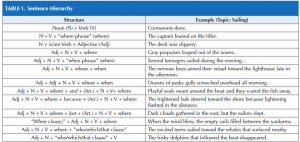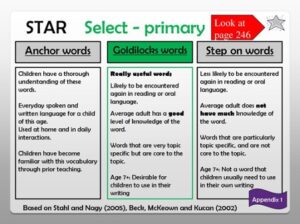LITERACY SCOPE AND SEQUENCE INTERVENTION
I originally created this scope and sequence for my own son to guide me in my understanding of what needs to be included in my phonology (SL) scope and sequence to provide a more inclusive structured literacy approach for him. I consider the list below to be for dyslexic students and tier 3 Students in an intervention setting and it is not an exhaustive list. Please consider this list as an example of how to create your own. I have also added a few web links for your convenience.
Handwriting
- Letter Formations a-z Lower case
- Capital Letters A-Z Upper Case
Grammar/Morphology
- UN – Prefix
- RE – Prefix
- Plural S/ ES – also suffix
- Homophones
- Period (full stop)
- Exclamation mark
- Question Mark
- ING – suffix
- ER – suffix
- Contractions
- Commas
- Apostrophe
- Abbreviations ( St = Street, rd = road, etc = etcetera)
- Antonyms
- Synonyms
- DIS – Prefix
- PRE -Prefix
- EST – Suffix
- LY – Suffix
- LESS – Suffix
- FUL – Suffix
Sentence types
- Declarative sentences: In English grammar, a declarative sentence is a sentence that makes a statement, provides a fact, offers an explanation, or conveys information.
- Exclamatory sentences: An exclamatory sentence, also known as an exclamation sentence or an exclamative clause, is a statement that expresses strong emotion.
- Imperative sentences: An imperative sentence is a sentence that expresses a direct command, request, invitation, warning, or instruction.
- Interrogative sentences: An interrogative sentence is a sentence that asks a question.
Parts of Speech
- Nouns – a person, place, thing or an idea
- Common Noun
- Proper Noun
- Verb – Action words
- Adjective
- Adverbs
- Pronouns
Sentence Structure in oral language to move to writing
- Who
- What
- When
- Where
- Why
- Problem
- Article
- Subject and Verb sentence extension / WHO and DO sentence
Sentence Structures
- Fragments
- Simple Sentence
- Extend the Sentence
- Conjunctions
- Dependent and Independent Clauses
- Compound sentence
- Complex sentences

Find more information here – https://nj.dyslexiaida.org/wp-content/uploads/sites/18/2022/10/Haynes-StructuredApproachesWritingHaynesSmithLaudIDAPerspectives_2019.pdf
Find more information here -William Van Cleave Free PDF https://www.wvced.com/wp-content/uploads/2019/04/From-Words-to-Works-Writing-Handout-4-1-19.pdf
Subordination
- Because
Co-ordination
- But
- So
- For
- And
- Or
- Yet
- Nor
Six Syllables as reference for educators knowledge
- Open
- Closed
- Silent E
- Vowel teams
- Controlled R
- Controlled LE
Vocabulary
Take words from the books the children are reading or someone is reading to them. Teach the words that will come up in everyday day life and school. Words can be categorised by groups into Tiers, 1, 2, 3. We (the deb) think the tier system can be a little confusing especially since the education system uses it in intervention.
We much prefer the Word Aware set up using anchor words, goldilocks words and step on words.
- Anchor words : tree, boat, them, animals and plants –These words children already know and you don’t need to teach them.
- Goldilocks words : grateful, fabulous, altogether, respectful, maintain, structure, comprehension, junction – These words will be used in all subjects and parts of life, needed for daily use.
- Step on words: Tropic of Cancer, atoms, Arctic Circle, catacomb, combustion –Words they are unlikely to come across on a daily basis and are related to particular topics.

To learn more please head to https://www.deb.co.nz/dyslexia/getting-started/what-is-background-knowledge-and-vocabulary/
Webinar – Maximise Your Read-Alouds to Build Language Comprehension by Maria Sabene Murray – https://www.youtube.com/watch?v=RqL-NSRQLcQ&t=2066s
RESOURCES – Programmes and Resources on the DEB website will provide plenty of options to support your learning and practice.
This document can be downloaded as a PDF here –Literacy Scope and Sequence .docx-2
Created by Sharon Scurr for DEB – Dyslexia Evidence Based on the 27 September 2023